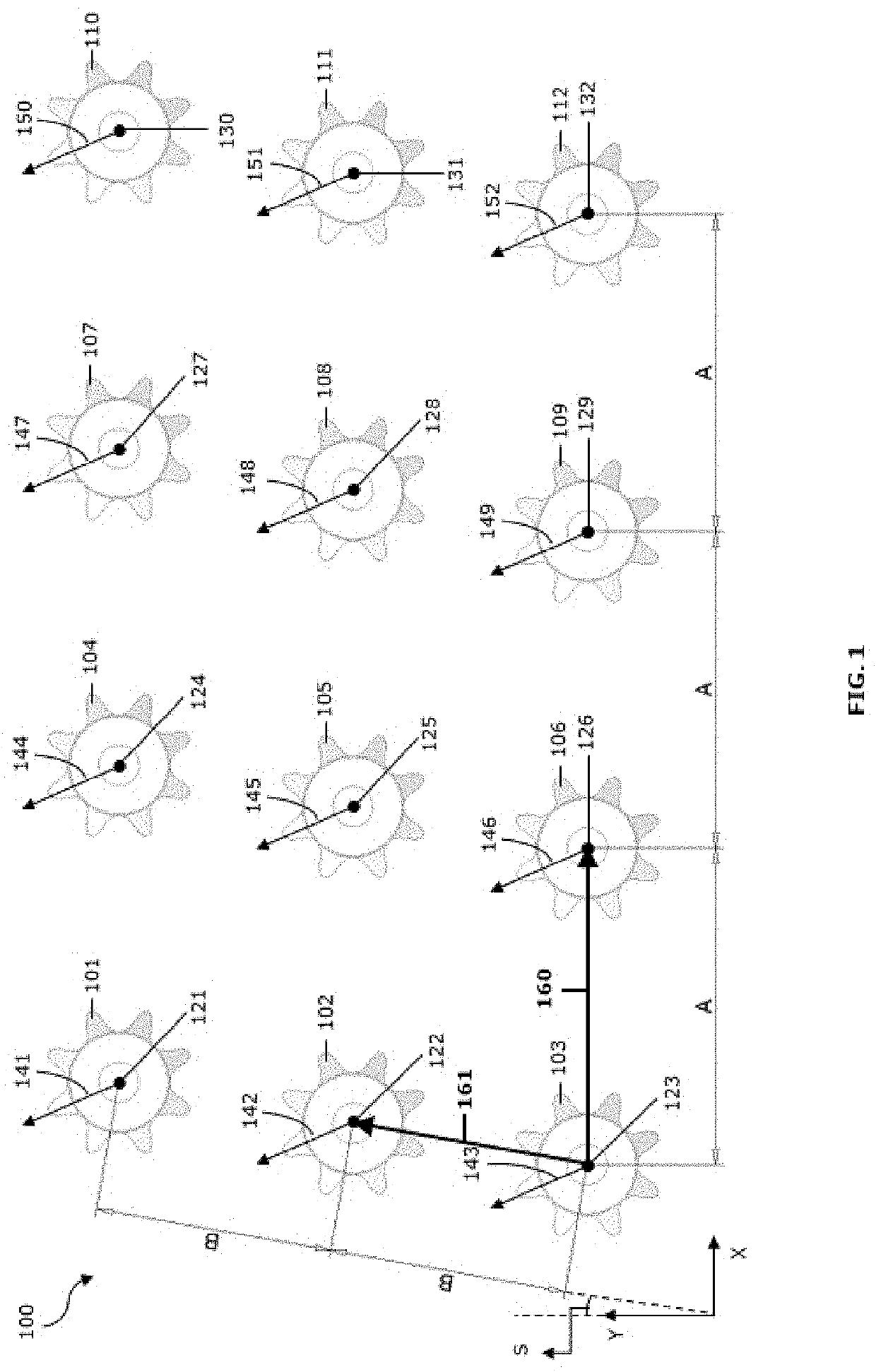Regular grid recognition in a cad model
a computer-aided design and grid recognition technology, applied in the field of automatic compression of a computer-aided design (cad) model, can solve the problems of not teaching automatic recognition of equal solids, and not providing for the automatic detection of arrays, patterns or grids. the effect of lowering the physiological burden on the user
- Summary
- Abstract
- Description
- Claims
- Application Information
AI Technical Summary
Benefits of technology
Problems solved by technology
Method used
Image
Examples
example 1
t of a CAD Model
[0150]FIG. 1 shows a schematic representation of an embodiment of a CAD model (100) comprising multiple equal entities (101, 102, 103, 104, 105, 106, 107, 108, 109, 110, 111, 112) comprising insertion positions (121, 122, 123, 124, 125, 126, 127, 128, 129, 130, 131, 132) according to a regular two-dimensional parallelogrammatic grid. The entities comprise an identical orientation (141, 142, 143, 144, 145, 146, 147, 148, 149, 150, 151, 152) with respect to a global coordinate system (X, Y) (GCS).
[0151]A plurality of equal entities is identified in the CAD model. The equal entities comprise an identical geometry. A block definition comprising the identical geometry is created. Each equal entity of the plurality is replaced in the CAD model with a block reference. The block reference comprises:[0152]a pointer to the block definition,[0153]the insertion position of the entity, and[0154]an insertion orientation, specifying a relative orientation of the entity with respect...
PUM
 Login to View More
Login to View More Abstract
Description
Claims
Application Information
 Login to View More
Login to View More - R&D
- Intellectual Property
- Life Sciences
- Materials
- Tech Scout
- Unparalleled Data Quality
- Higher Quality Content
- 60% Fewer Hallucinations
Browse by: Latest US Patents, China's latest patents, Technical Efficacy Thesaurus, Application Domain, Technology Topic, Popular Technical Reports.
© 2025 PatSnap. All rights reserved.Legal|Privacy policy|Modern Slavery Act Transparency Statement|Sitemap|About US| Contact US: help@patsnap.com

